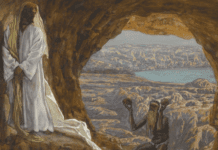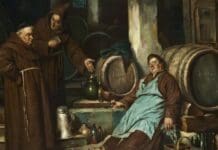For centuries, Catholics in Ireland have observed fast days as a way to discipline their bodies and minds, and to focus on their spiritual lives. As part of this tradition, they would abstain from certain types of food, including meat.
However, there was a time when Irish clergy believed that goose meat was an exception to this rule.
In fact, goose meat was so highly prized by Irish Catholics that it became a popular choice for those looking to honor their spiritual obligations while still satisfying their appetite. This little-known tradition is a fascinating part of Irish Catholic history, and it offers a glimpse into the rich cultural and spiritual heritage of the Emerald Isle.
Why did they see it as a unique food with special qualities that made it acceptable for consumption during fast days?
Because of a curious legend known as the Barnacle goose myth!
The barnacle goose is a mysterious and mythical bird that has captivated people for centuries.
According to legend, these geese emerge fully formed from goose barnacles, defying the traditional understanding of how birds breed. The origins of this myth can be traced back to ancient Roman and Greek sources, but it was popularized in medieval monastic manuscripts, particularly the Bestiary.
The enduring appeal of this myth can be attributed to a lack of knowledge about bird migration patterns, as it was not until the late 19th century that research revealed the truth about these geese’s breeding habits.
Today, we know that barnacle geese migrate to Greenland and northern Scandinavia to nest and reproduce, however for a short time Irish clergy in the Middle Ages considered barnacle geese were as good as fish for food while fasting.
13th century Welsh author Giraldus Cambrensis criticized the practice:
“Bishops and religious men (viri religiosi) in some parts of Ireland do not scruple to dine off these birds at the time of fasting, because they are not flesh nor born of flesh. But in so doing they are led into sin. For if anyone were to eat of the leg of our first parent (Adam) although he was not born of flesh, that person could not be adjudged innocent of eating meat.”
During the Fourth Council of the Lateran in 1215, Pope Innocent III made a groundbreaking decision that would have significant implications for these Irish Catholics.
He declared that it was strictly prohibited to consume barnacle geese during their time of fasting. This seemed strange to them, given the unique and mythical way in which these geese are said to reproduce, but the Pope had a specific rationale for his decision.
He argued that despite their unusual origins, barnacle geese lived and fed like ducks, making them fundamentally similar to other birds. As a result, they could not be considered a suitable food for Catholics observing the strict dietary rules of fasting.
This ruling marked a significant moment in the history of the Catholic Church, and it remains a fascinating piece of trivia to this day.
















